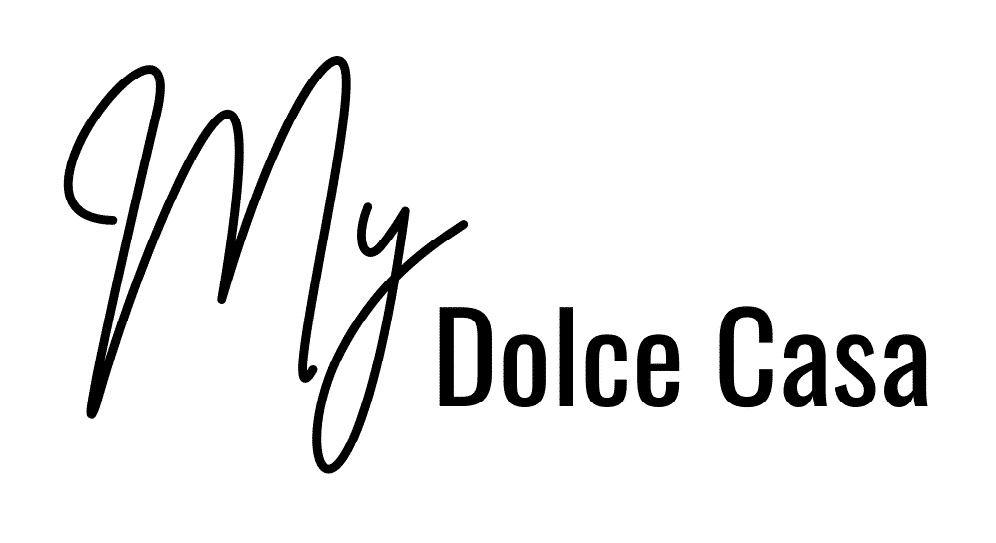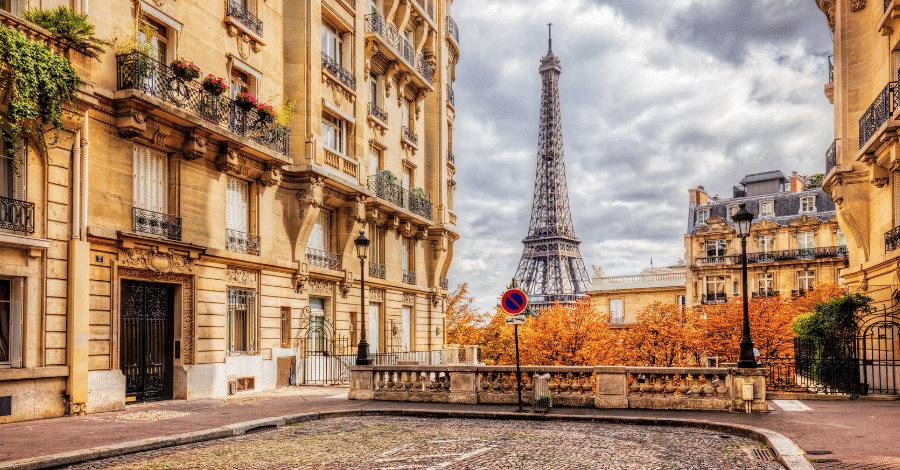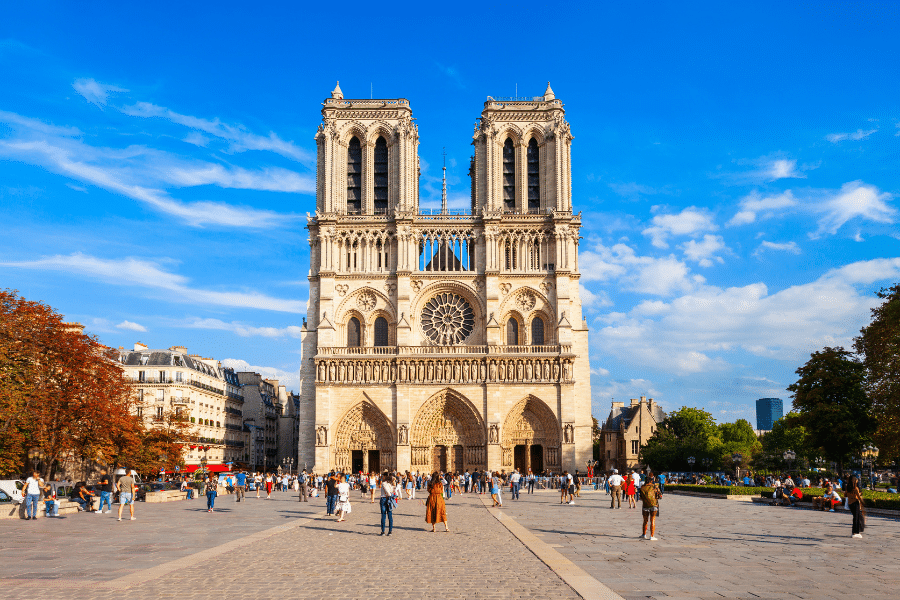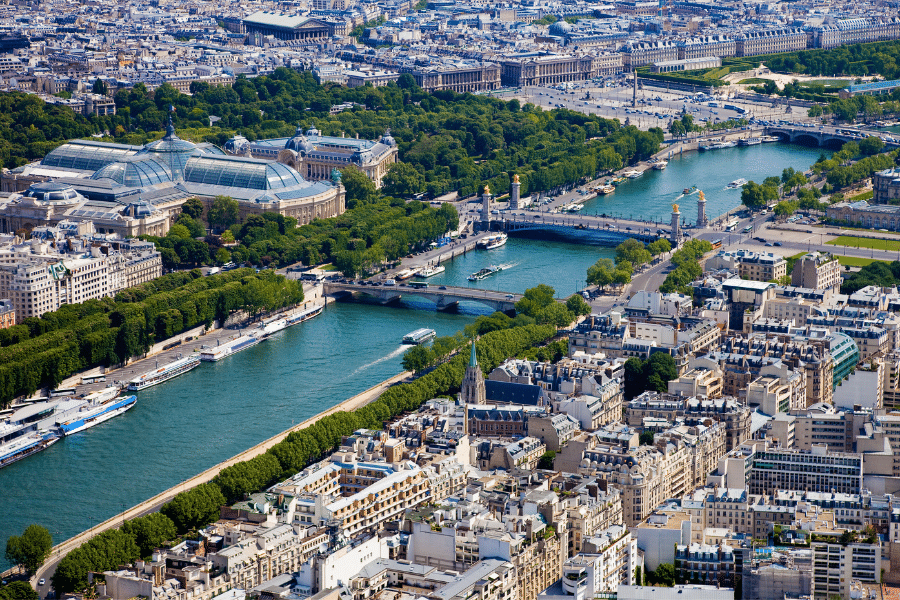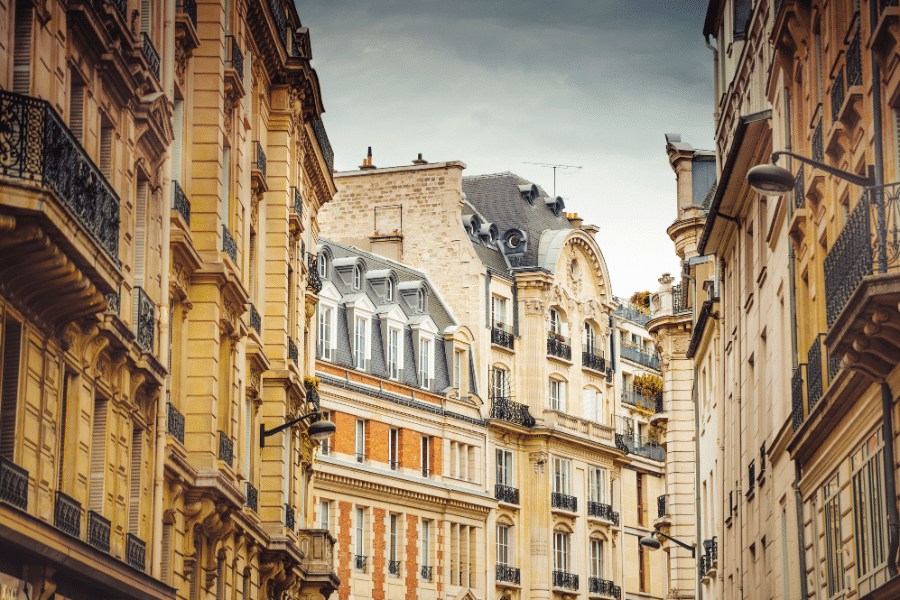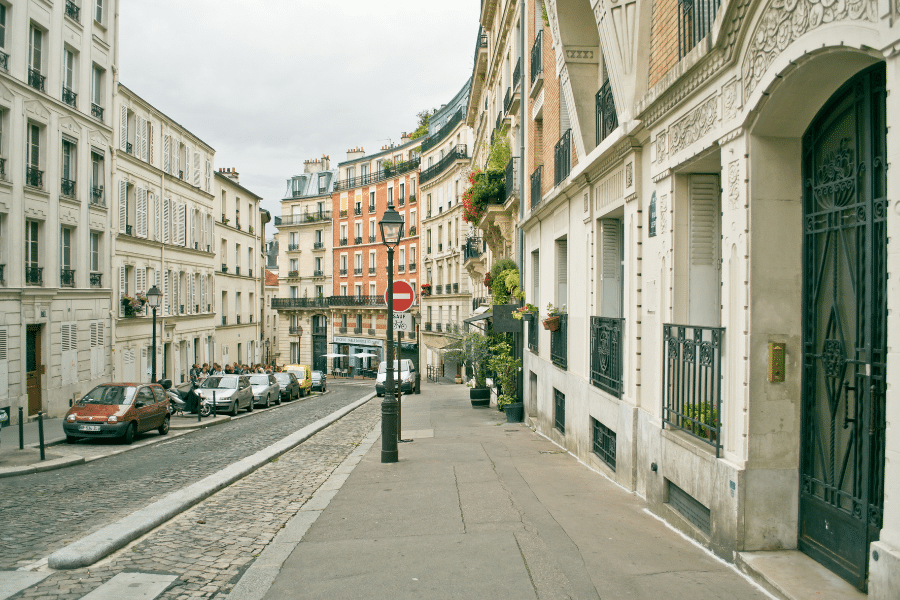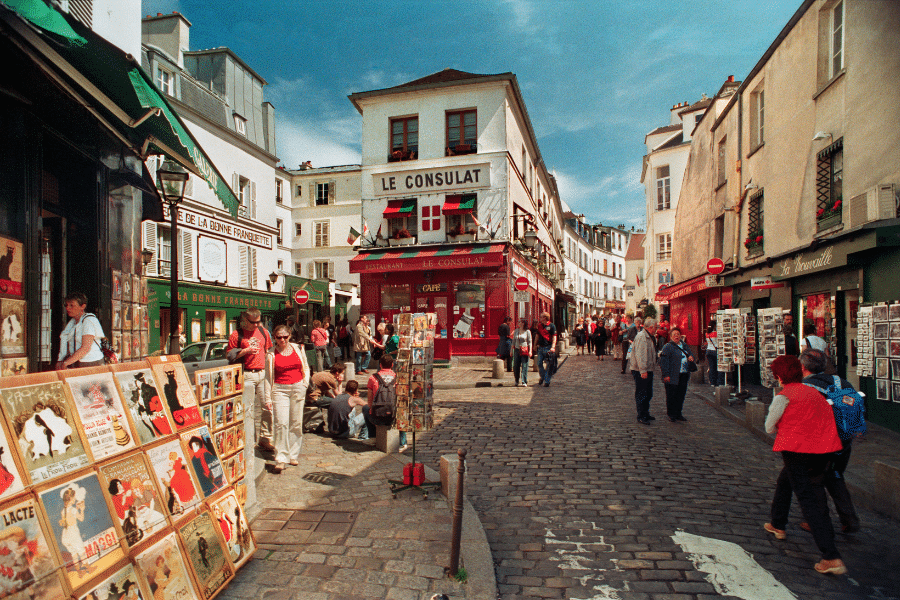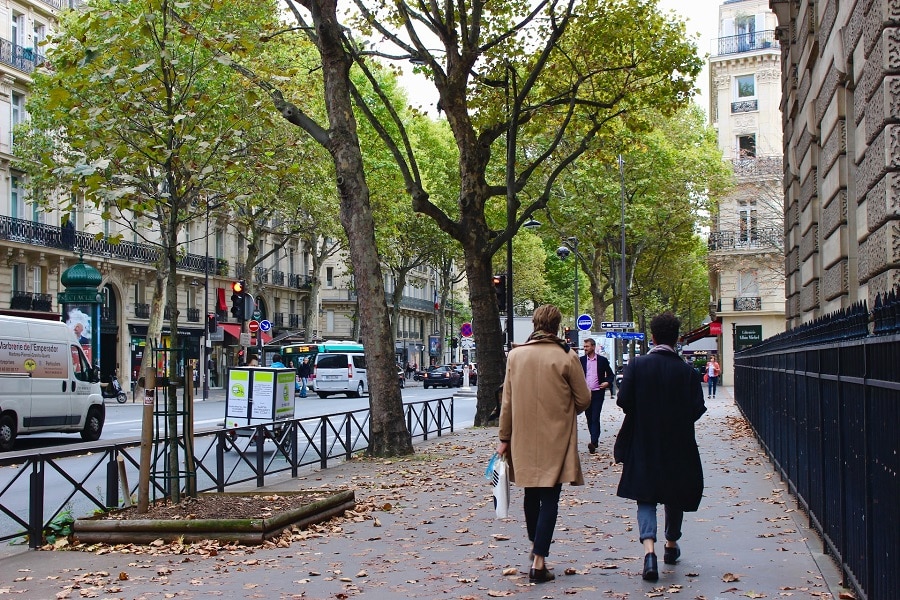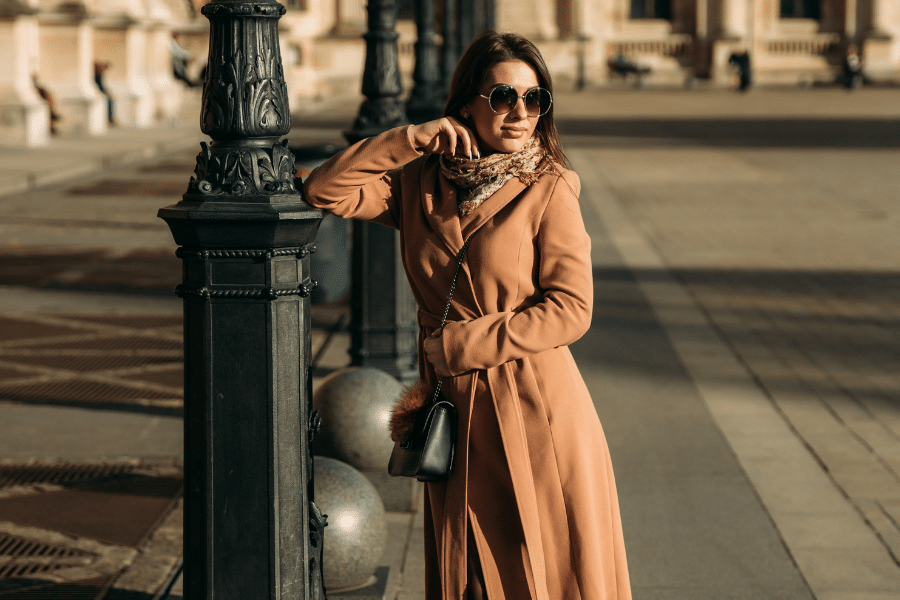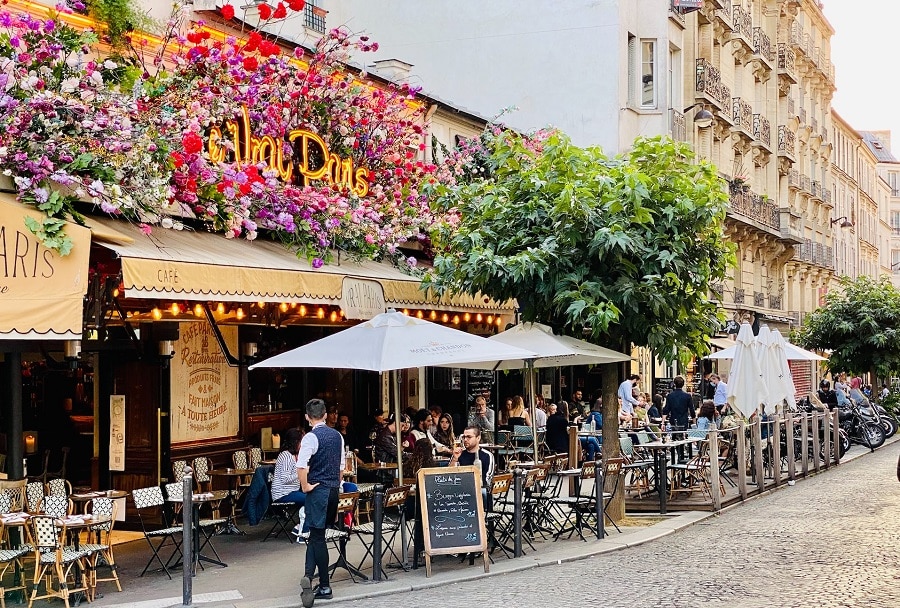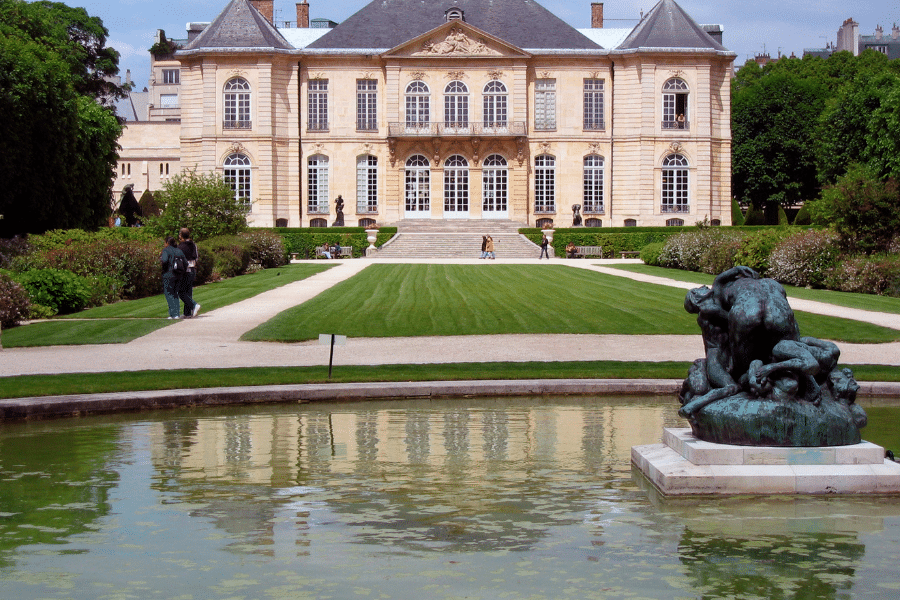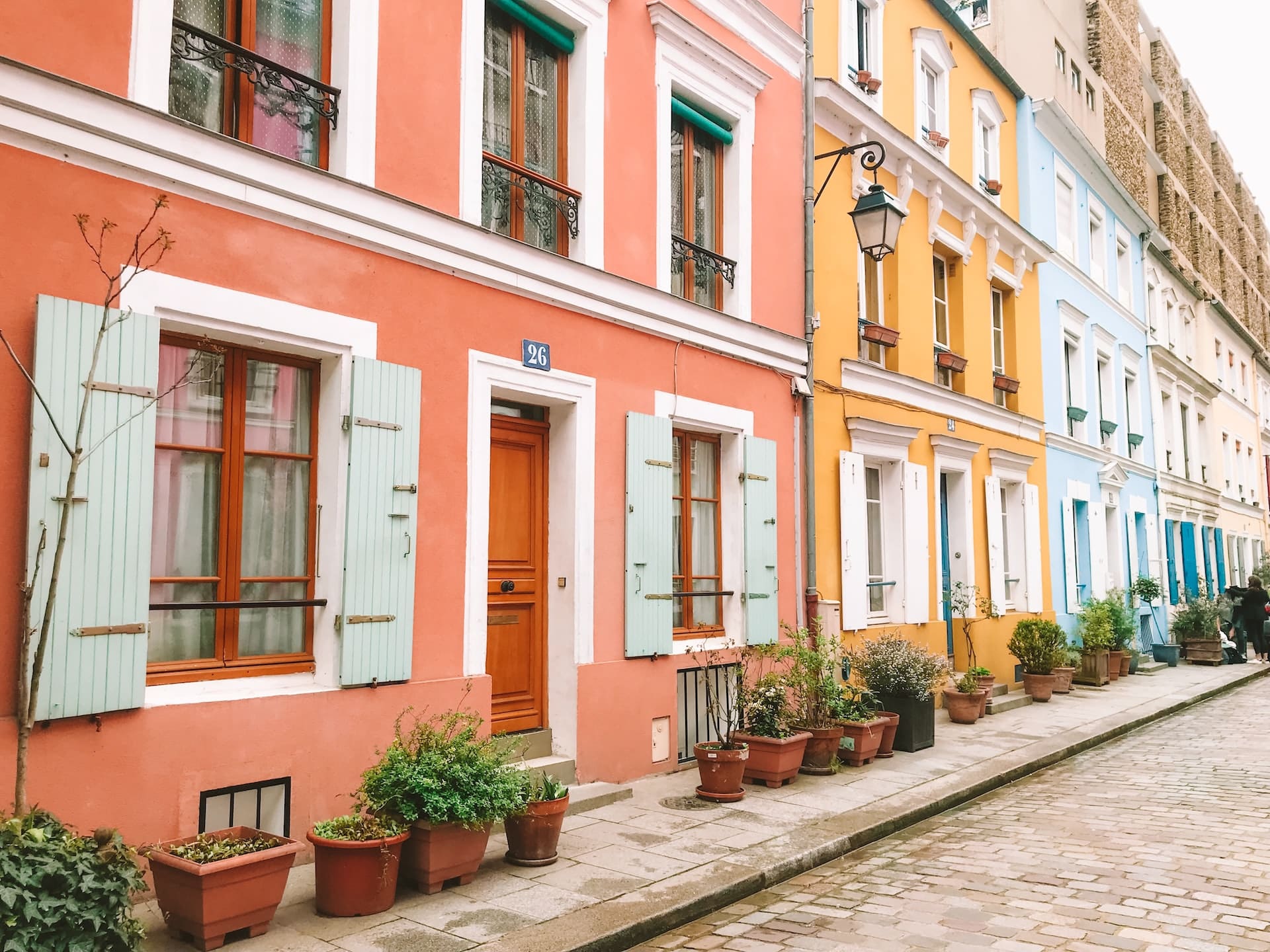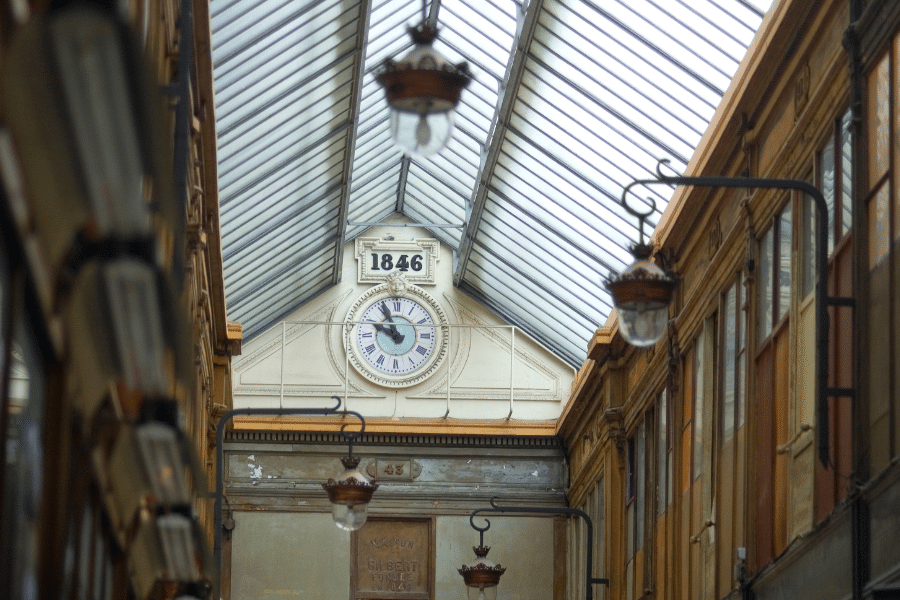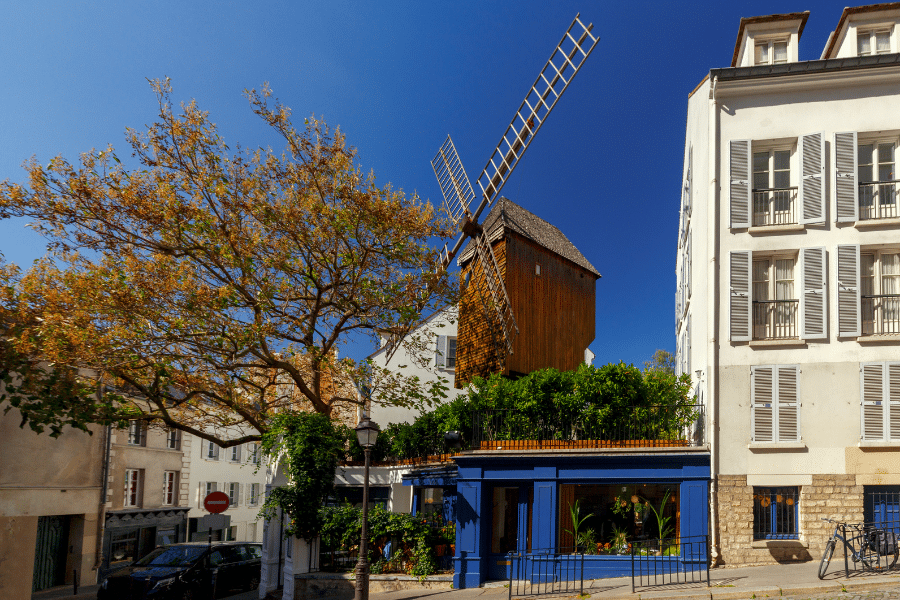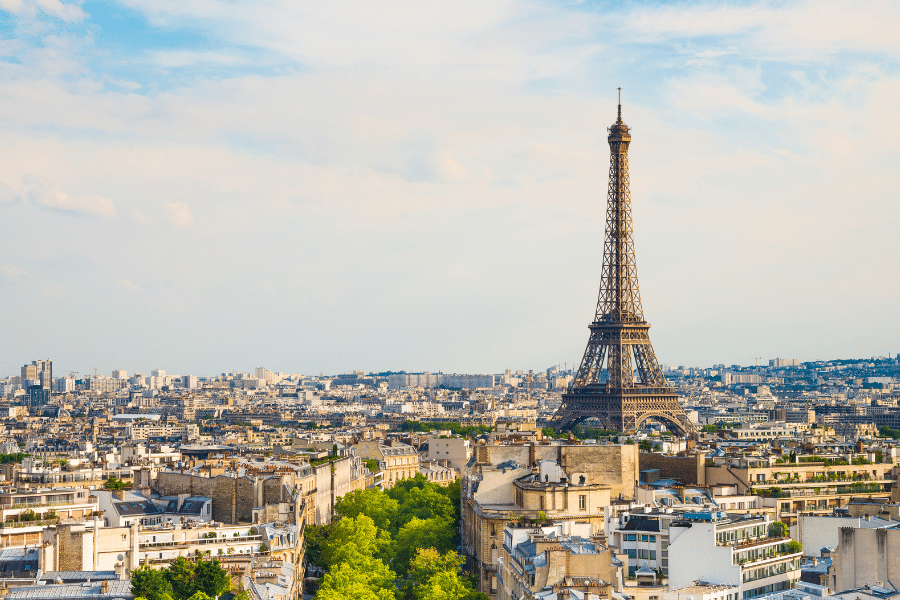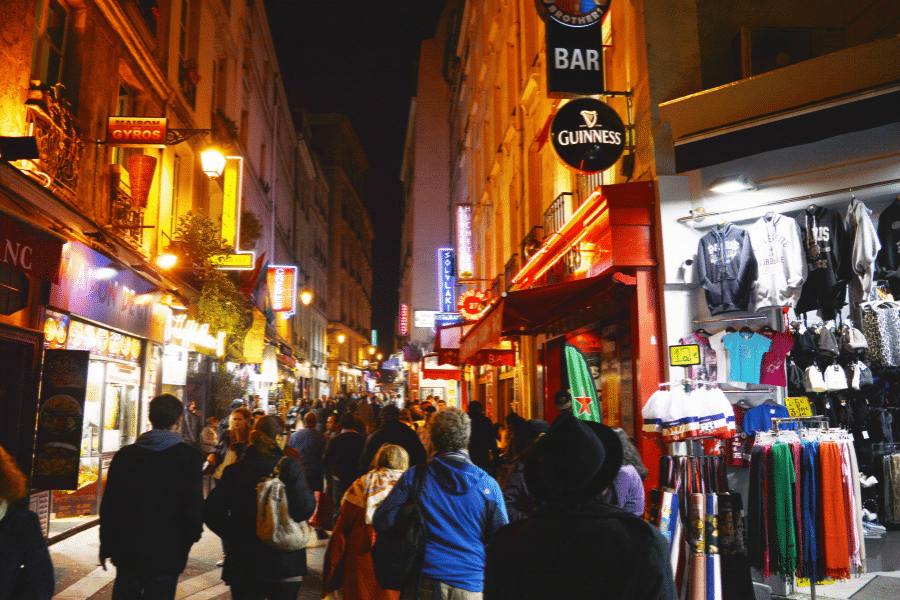How you view Paris as a tourist and living in Paris a resident are two very different things. Paris is the most visited city in the world, welcoming more than 40 million tourists every year.
During the summer months there are lines for all the popular sights. Without pre-paid tickets for the iconic Eiffel Tower, the wait is several hours long. Other attractions and the pavements of the Champs Elysée are packed.
So, what do Parisians do and where do they go when the capital is so busy? We decided to give you peek into the life of a local in Paris.
Finding somewhere to live in Paris
Understanding the layout of the city
Paris is divided into 20 arrondissements (neighborhoods) and this total area is referred to as Ile-de-France. The 1st Arrondissement is the heart of the city, on the north bank of the river Seine. It lies close to the world-famous Louvre art gallery and Le Jardin des Tuileries.
The arrondissements radiate from the centre in a circular and numerical spiral in a clockwise direction – a little like the contours on a snail shell. The Ile-de-France (Paris and its suburbs) has a population of 12 million people. Of this, 1.7 million of the population are foreigners, including 14,000 Americans.
The two sides of Paris and its postcodes
Aside from the different neighborhoods, Parisians also differentiate between the left bank of the Seine (rive gauche) and the right bank (rive droite). The area on the left bank is south and the right bank is north. Traditionally, the two sides of the river have had very different characters.
The left bank of the Seine is seen as more artistic, bohemian, and popular with students, while the right bank is deemed more sophisticated and elegant.
Postal codes allow you to easily identify a location in Paris. The last two numbers of the Parisian postcode indicate the arrondissement – for example, 75004 is a 4th arrondissement postcode and 75017 is in the 17th arrondissement.
The Parisian housing market
Only 33% of Parisians own their own homes. There are 1.4 million houses and apartments, but only 2% of these have been recently built. Needless to say, rental prices are more expensive in Paris than in any other part of France.
Monthly rental prices average $2,500 (€2,300) per month for a two-bedroom apartment. This price varies depending on the arrondissement you choose, with the 3rd and 4th (known as Le Marais) and 5th and 6th arrondissements (the Latin Quarter) being the most popular, with higher rents.
The 7th arrondissement lies close to the Eiffel Tower and is ideal for families and so is the 12th arrondissement on the right bank as it has plenty of sport facilities.
The most affordable of the arrondissements is the 20th to the east, which is known as Pére Lachaise. For more affordable rents still, you will need to look at moving further out to the suburbs. This is not so difficult as Paris has an excellent public transport network.
It is important to know that the 10th and 18th arrondissements have the highest crime rates and the 19th is considered an underprivileged area.
Check our complete guide to renting in Paris, with step by step guidance and up-to-date rent prices by arrondissement.
Nailing a good rental in Paris
Once you have decided on a neighborhood you like and checked that it meets your individual requirements, you can start hunting for a property. You will have to work fast, as good apartments are snapped up quickly. A good starting point is the Mairie (Town Hall) in your chosen district. Staff there can give you information about amenities and often know of properties for rent too.
Walk around the area and look for signs pinned on gates, windows or doors with the words À Vendre or initials AV (For sale) or À Louer (For rent). Many Parisians prefer not to use estate agencies to avoid commission charges. Having said that, it is worth popping in to agencies in the neighborhood to check what properties they have available.
The most popular way to advertise property for sale or rent is on one of the websites. There are several good places to search for property online.
Check out our curated list of the best websites to find property in France.
Where to shop for food in Paris like a local
France is world famous for its markets and many French people would not imagine buying much of their food anywhere else.
There are more than 90 markets in Paris, in every arrondissement. Some markets like Marché des Enfants Rouges and Marché de Aligre are tourist hotspots, but there are others that are just as much fun and not quite as crowded.
Marché international de Rungis is the largest food wholesale market in the world and the go-to for many of the capital’s chefs. It is certainly a great place just to visit for the experience (1 Rue de la Tour, 94150 Rungis). It is situated in the southern suburbs but is easy to reach using the Metro.
Also out of town is the Marché Dejean (23 Rue de Suez, 75018 Paris). This market is in the 18th arrondissement and specializes in fayre prepared by the West African community in the neighborhood – including manioc specialities.
Marché Biologiques des Batignolles (34 Bd des Batignolles, 75017 Paris) is a treasure trove for organic food and really good ready-made dishes – with the chance to meet the producers.
If the weather is looking uncertain, you can discover Marché Saint-Martin in the 10th arrondissement (31-33 Rue du Château d’Eau, 75010 Paris). This is a small covered market with really varied and tempting stalls selling really top-notch quality produce from local growers. The market is also known for its gourmet specialities that include Moroccan cuisine and German grocery stalls.
Living in Paris, you will soon notice that visiting your local boulangerie is a ‘must do’ and you will even spot smartly dressed business people in suits with a baguette tucked under their arm. For serious temptation, visit your nearest patisserie and choose some irresistible macarons or eclairs.
How to dress like a local in Paris
Even if you weren’t planning to overhaul your wardrobe, living in Paris may well prompt you to do so. Known as the fashion capital in the world, it is not surprising that Parisians definitely dress well.
You may well have to bid au revoir to your baseball cap and jogging pants. Parisians dress smartly at all times and adore a great pair of Levis paired with a blazer. Their style is elegant and chic.
The women favor well-cut clothes in neutral shades that are lifted by the addition of a colorful scarf or accessories. Parisians tend to wear lighter, brighter colors in the spring and summer only, and favour darker shades during the autumn and winter.
Parisian ladies love wearing colorful luxury scarves all year through. Shoes and handbags are always good quality with clever details. Converse sneakers are OK, but no plastic sandals or flip flops.
Parisian men dress conservatively, favoring top-quality stylish classics for both work and leisure. Parisians only wear shorts on the hottest of days and they must be not too short and tailored.
Choosing authentic ‘local’ restaurants
Food is always an important consideration and eating like a local is essential once you have moved to Paris as this will definitely save you money and you will enjoy far better meals at the same time.
As a ‘rule of thumb’ avoid all restaurants that have menus in English as they are geared towards tourists and the prices will be higher. Avoid all the main tourist areas for this reason and discover some of the city’s quieter neighborhoods where there will be family-run bistros and brasseries that are packed with locals.
Lunch is the most important meal of the day and is usually between 12.00 and 14.30. Lunch is usually a two or three-course meal accompanied by wine.
Look out for the ‘Formule Midi’ as this is the fixed price lunch option which has several alternatives for each course and is good value for money (usually under under €20/ $22). The Formule Midi usually offers the choice of Entrée and Plat (appetiser and main course), Plat and Dessert (main course and dessert), or you can order all three courses. Some restaurants advertise a “plat du jour” which is their ‘dish of the day’.
Dinner is served in the evenings between 19.30 and 23.00. It is acceptable either at lunchtime or at dinner to request a ‘doggy bag’ for any leftovers on your plate. The service charge is included in the bill, but many Parisians leave a small additional tip of a few euros (le pourboire) if the service has been really good.
10 little known places to discover in Paris
During the winter months, the pace does slow down a little in Paris and this is when the city’s residents visit all the main places of interest. For the rest of the year, there are many lesser-known places to visit, where few tourists venture and residents can relax and enjoy.
While the Louvre and all the other main museums are best avoided when Paris is busy, there are a number of smaller and lesser-known museums and other places of interest that residents enjoy visiting.
As the centre of Paris can be easily explored on foot in the winter, many Parisians enjoy taking a stroll and then sitting in one of the coffee shops and leisurely watching the world go by.
This is a fascinating museum that is in the home of the artist Ary Scheffer. The house at 16 Rue Chaptal in the ‘artistic quarter’ of Paris was frequently visited by writers and artists for Scheffer’s popular ‘Friday Night Salons’.
The composer, Chopin and British author, Charles Dickens, were among those joining in the evenings which focused on creativity. The museum preserves the legacy of Ary Scheffer and the 19th century Romantic Movement in France.
The impressive building was built for the 1900 Universal Exhibition in the shape of a trapezium with four wings around a semi-circular garden with elements of both traditional and modern architecture.
Two years later it was established as an art museum and today houses the City of Paris Museum of Fine Arts (Musée des beaux-arts de la ville de Paris).
Its exhibits include a significant collection of decorative murals and sculptures that were created in the years 1903-1925 that tell the story of art until the modern day.
3. Musée Rodin
This art museum opened in 1919 and is dedicated to the works of the French sculptor Auguste Rodin which are displayed both inside and out in the beautiful gardens.
This museum has 6,600 sculptures on display plus 8,000 drawings, 8,000 photographs and 7,000 other objets d’art.
4. Rue Cremieux
This delightful cobblestoned street is situated in a residential area that many Parisians haven’t discovered! It offers the perfect photo opportunity as it has flower-filled tubs on the pavements and pretty pastel-coloured houses. Rue Cremieux is situated at 75012 in the city.
5. Glass-covered walkways
There are nine covered walkways in the city that have beautiful old glass roofs. They were built at the end of the 18th century with stained glass ceilings, mosaics and wrought iron decorations to provide attractive indoor places for Parisians to socialise as they contained coffee shops, bistros and even small theatres.
Passage des Panoramas (11 Boulevard Montmartre, 75002) is the oldest. The lighting through the glass is very beautiful and, in the evening, the classically styled lanterns add even more character.
There are some great little restaurants and coffee shops to enjoy there. Another glass-covered walkway to discover is Passage Verdeau, situated at 6 rue de la Grange-Batelière, 75003 Paris and has a number of small and interesting boutiques.
6. L’Oasis D’Aboukir
This amazing vertical garden will definitely be good for selfies. Situated at 83 Rue d’Aboukir, 75002 Paris and covering 250 square metres, it was created by the French botanist Patrick Blanc and comprises of 7,600 plants of 237 different species.
7. Square Saint-Gilles Du Grand Veneur
This attractive square is often deserted – which is ideal as time is needed to admire its traditional baroque style architecture.
The square has colorful flowerbeds and is the perfect place to linger for a while with a good book. The square is situated in Rue du Grand Veneur, 75003 Paris.
8. La Mouzaia
Situated in the 19th arrondissement, the tiny residential neighborhood of La Mouzaia is absolutely delightful as it has retained its old character.
It is fun to take a stroll here at any time of the year, but during springtime the pretty blossom ensures La Mouzaia looks its best. Head for Rue de la Mouzaia, 75019 Paris.
9. The windmill of Montmartre
While many visitors to Paris visit Sacré Coeur and Place des Tertres, few find the Moulin de la Galette in the same area. In the past, Paris had scores of wooden windmills and this windmill dates from the 17h century.
It was used for milling flour and in the 19th century, its owners, the Debray family, started to make a brown bread ‘galette’ for which the windmill became popular. Slices of the bread were always served with a glass of wine. The mill was featured in Renoir’s painting Bal de Moulin de la Galette.
10. La rue du Chat-qui-Pêche
If you are enjoying a stroll around the city and want to see something amusingly different, search out Rue du Chat Qui Peche, 75005 Paris. Its name means the street of the cat that fishes and it is the narrowest street in the city.
Dating from the mid 16th century, it has long been used by local people to reach the river. Today it is fun to admire the interesting cat-themed street art.
A few Parisian ‘must dos’
French people are very polite and will always greet you with ‘Bonjour Monsieur/ Madam ’ when they pass you in the street or when you enter a shop.
As you leave a shop or office, it is important to say ‘Au revoir et bonne journée’ – ‘Goodbye and have a good day’.
Never speak to a French person before greeting them with ‘bonjour/ bonsoir’.
In French there are two forms of ‘you’. ‘Vous’ is more formal and is used when addressing someone you do not know, an older person or your boss or professor.
Using ‘vous’ is a mark of respect. When addressing your family, friends, teenagers and children ‘tu’ is more informal and preferred.
French people will greet close friends and family members with a ‘bise’ (kiss) on each cheek – but not an American style bear hug.
In Paris you should never be on time for a meeting with friends– to be ten minutes late is perfect. This rule does not apply to business appointments or restaurant reservations.
When you are climbing stairs or an escalator, always keep to the right as those in a hurry will be able to pass you quickly on the left.
In complete contrast with many other countries, it is considered rude to keep your hands off the dining table and hidden on your knees.
Now that you are going to be living in Paris, it is important that you try and learn French. Any attempts to speak French will be much appreciated and it will certainly make life much easier for you in shops, restaurants and health centres – to name just a few. Being able to speak with your new neighbors will have its advantages in the long run.
Discovering the real character of Paris is something that will take time but will be very rewarding. The city’s character mirrors the changing seasons and of course, Paris feels very different when it is inundated with tourists in the summer months.
One glance at the evening city skyline with its twinkling Eiffel Tower will convince you that living in Paris was definitely a good move.
